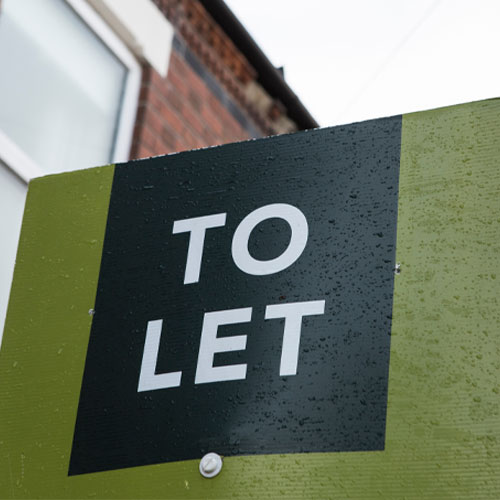
Buy To Let Insurance
Compare Buy-To-Let Insurance Quotes
- Complete one short form
- Quickly compare quotes
- Find a great deal today!

Compare buy-to-let insurance quotes from UK’s leading landlord insurers including:
Why Compare Buy-To-Let Insurance Quotes At SimplyQuote.co.uk
To get a good deal on your buy-to-let insurance, you have to compare quotes. Yet, this can take ages and if you do it yourself, you might not get the results you’re looking for.
At SimplyQuote, we believe you should have more time to focus on important things like renovating your new property. That’s why, through our partnership with Quotezone, we offer a free comparison tool to help you quickly explore buy-to-let insurance quotes from the UK’s leading providers.
What Do You Need To Get A Quote?
To get your quote, please provide the following information:
- The property type
- The number of bedrooms
- If the property is furnished or unfurnished
- The materials the building is made out of
- The property’s location
- Any prior claims on the property
- Your desired level of cover
Why Do You Need Buy-To-Let Insurance?
The dangers you face as a landlord with a buy-to-let property are different from the risks involved with running an owner-occupied dwelling. Because of this, buy-to-let insurance is different from a standard home insurance policy.
If you don’t have buy-to-let insurance as a landlord and you tried to claim for damages to your rental property against a standard home insurance policy, it’s unlikely your insurer would pay out, as they were not aware of the risk to the property when signing your insurance agreement.
If you own a rental property buying the right plan can save you a lot of money in the long run if something were to go wrong.
If you choose not to purchase a policy because you don’t think your tenants will damage your property, you will be liable for any expensive repairs, and you will need to pay for court claims out of pocket.
A cheap buy-to-let insurance policy can help you sleep easy at night.

What Does Buy-To-Let Insurance Cover?
Buy-to-let is a pretty comprehensive type of landlord insurance. Of course, it doesn’t cover everything that a full landlord insurance policy does, but you might be pleasantly surprised by what’s included.
Let’s take a look.
What’s covered
- Property owners’ liability: This covers any legal fees if someone were to have an accident in your dwelling and blame you for their injuries. Landlord liability insurance is not the same as public liability insurance.
- Loss of rent: Loss of rent insurance covers you for part or all of your rental income if your property becomes uninhabitable and your tenant has to move into temporary accommodation.
- Accidental damage cover: This covers the cost of fixing any accidental damage to your property.
- Buildings insurance: Buildings insurance covers you if your property is damaged by events like vandalism, storms, floods, or fire.
- Legal expenses cover: This compensates you for any legal costs you incur when attempting to resolve a dispute in court.
What’s not covered
- Unoccupied properties
- General wear and tear
- Lack of maintenance
- Malicious damage
- Terrorism
- Business use
- Existing damage
What kind of properties does buy-to-let insurance cover?
This type of landlord insurance covers most types of residential rental properties including:
Apartments and flats
- Houses
- Bungalows
- Student accommodation
- Multi-unit properties
- Listed buildings
- Bedsits
- House shares
What Add-Ons Are Available For Buy-To-Let Insurance?
You can tailor your buy-to-let properties insurance plan to your specific needs. You can usually add the following to your plan at little extra cost:
Unoccupied property insurance
This protects your property when there are no tenants staying in it. This is one of the most important types of insurance to have as the risks posed to an unoccupied property are double that of an occupied property. People often have difficulty making a claim without this type of insurance.
Alternative accommodation cover
If your tenants need to move out due to an insured event, this covers that cost.
Landlord home emergency cover
Every landlord needs this type of insurance. It covers costs incurred in an emergency situation. Covered events usually include power cuts, burst pipes, and broken doors.
Malicious damage insurance
This covers the cost of fixing any deliberate damage to your property, including damage done by tenants.
How Much Does Buy-To-Let Insurance Cost?
On average, you can expect to pay around £130 to £450 per year for buy-to-let insurance. This might sound expensive, but it’s less than you’d pay for a more comprehensive type of landlord insurance cover.
So, it’s usually more cost-efficient to opt for buy-to-let insurance if it adequately satisfies your needs.
What impacts by-to-let insurance prices?
- Type of property: Riskier buy-to-let property types like listed buildings are more expensive to insure than other property types like flats. As a result, your premiums will be higher if you insure a risky property type.
- Number of properties: You’ll pay higher premiums if you insure more than one buy-to-let property.
- Location: If the location of your buy-to-let property is perceived as risky, like a high crime area, your premiums will likely be high.
- Claims history: If you have a history of making large or multiple claims, the insurer will increase your premiums.
- Optional add-ons: If you choose additional cover for things like legal costs, property owners’ liability, and lost rental income, you’ll be charged more.
- Excess amount: Typically, the higher the voluntary excess, the lower the premiums.
How Can You Get Cheaper Insurance?
Managing buy-to-let properties can be stressful and expensive. So, the last thing you want is to be paying really high insurance premiums when they could be lower. Fortunately, there are several steps you can take to reduce the amount you pay, such as:
Improving security measures
You can reduce your premiums by installing security measures like locks, burglar alarms, and safes. These all make your property less risky in the eyes of an insurer.
Pay a higher excess
If you choose to pay a higher voluntary excess, your premium payment amounts should come down. However, you need to be sure you can afford to pay the excess amount if you do need to claim.
Maintain a good claims history
Try to avoid claiming on your buy-to-let or any other landlord insurance policy. With each claim, your insurance premiums will increase. This is particularly true for large, expensive claims.
Pay annually rather than monthly
The majority of insurers will give you a small discount if you pay for your policy in one lump sum each year, rather than paying it monthly.
How To Compare Buy-To-Let Insurance At SimplyQuote.co.uk?
Compare buy-to-let insurance services at SimplyQuote.co.uk in four easy steps:
- Fill in the short form: Provide information about yourself, your property, and your location.
- Choose policy add-ons: Choose which additional cover add-ons you want.
- Compare quotes: Find a quote to suit your budget and buy-to-let insurance needs.
- Save money: Get the best deal to start saving today.
Frequently Asked Questions
Buy-to-let insurance is a type of landlord insurance that covers residential rental properties. It’s specialised insurance that covers landlords for risks that aren’t usually covered by regular homeowner’s insurance policies.
Having buy-to-let insurance is not a legal requirement. But most trustworthy mortgage lenders will require that you have this kind of policy if you are applying for a buy-to-let mortgage as it protects both your investment and their repayments.
Policies are always changing, and in some cases, standard home insurance no longer covers a rental property that you don’t live in. In this case, buying a buy-to-let landlord insurance policy is the only way to protect your investment.
Written by Chris Richards
Page last reviewed on 28th January 2025 by Chris Richards
